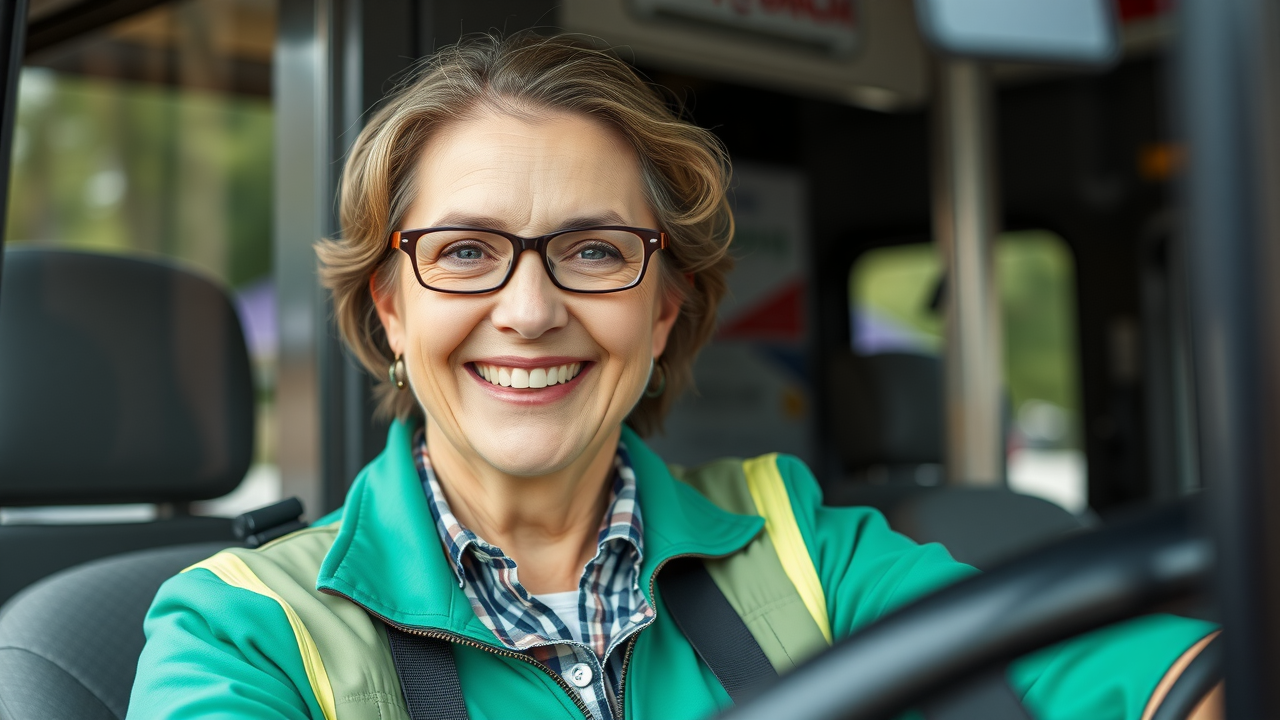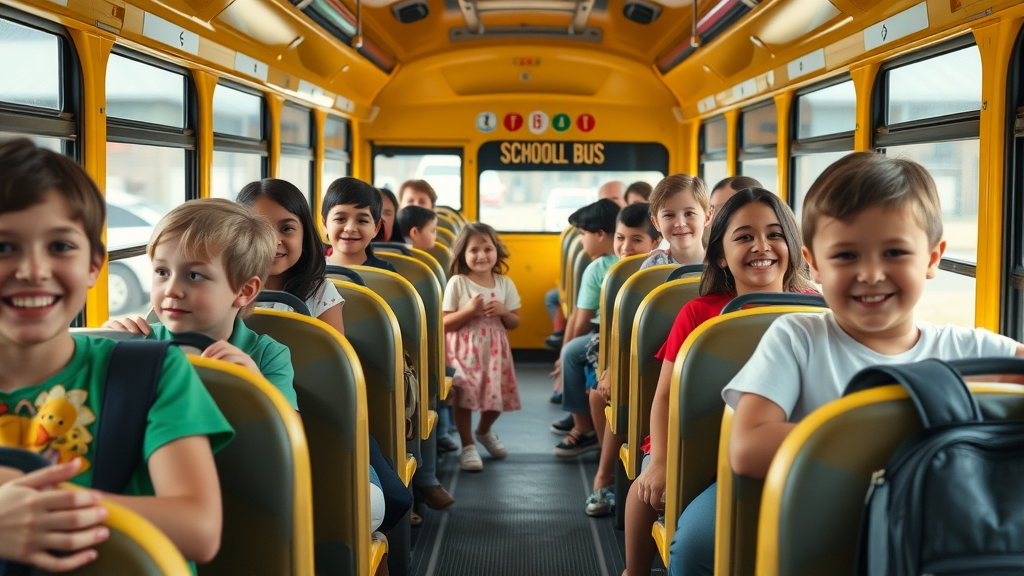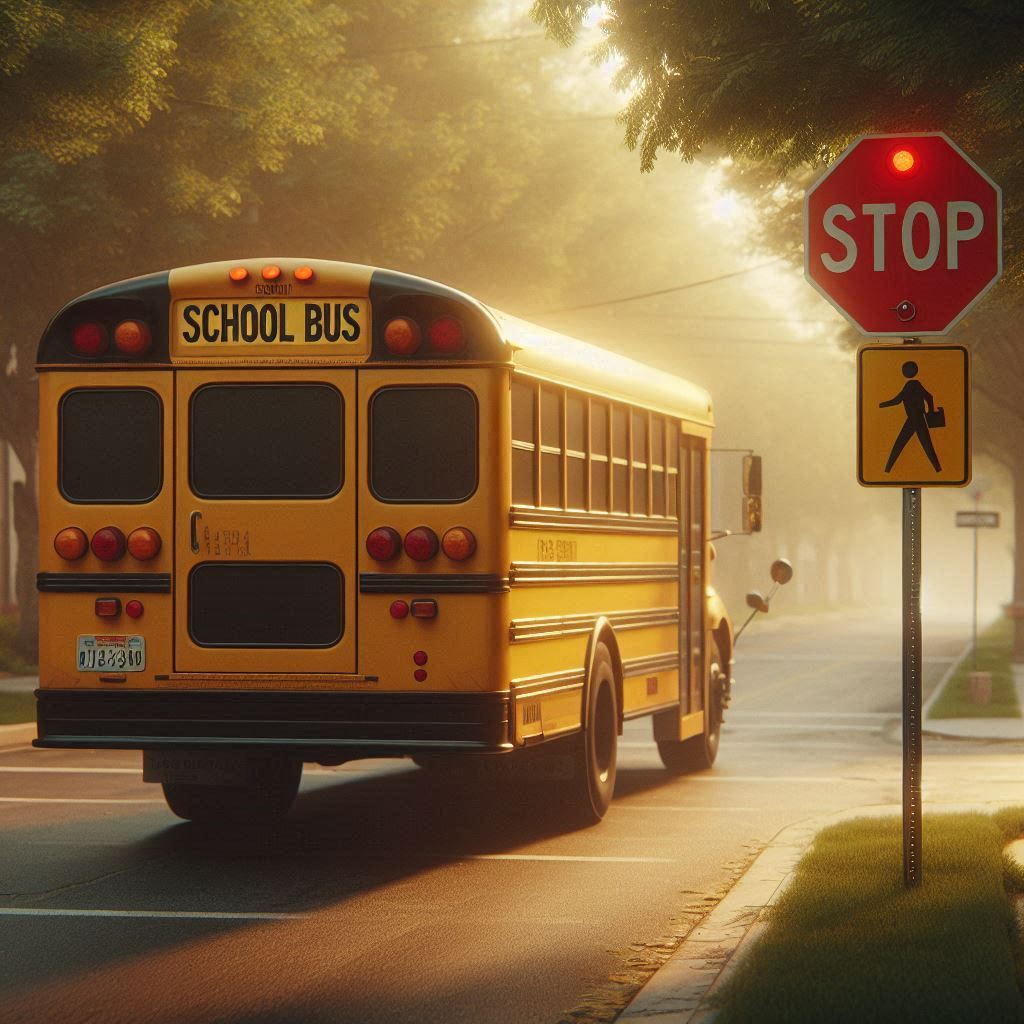Did you know that according to the National Highway Traffic Safety Administration, school buses are the safest mode of transportation for children going to school—but the real danger lies in the moments when children are approaching or leaving the bus stop?

While riding a school bus is impressively secure thanks to strict regulations and protective design, many parents overlook crucial bus stop safety tips and pedestrian safety measures. In this comprehensive guide, we share actionable school bus safety tips for kids to empower families and ensure safe school bus rides before, during, and after every trip.
Why school bus safety tips for kids matter: Startling facts every parent should know
Safety is paramount when it comes to children and transportation. The National Highway Traffic Safety Administration reports that school buses are highly regulated vehicles designed for child protection, making school buses around 70 times safer than traveling to school by car. However, risks persist, especially in the "danger zone"—the 10-foot area around the bus—where children are most at risk of being struck due to limited driver visibility and unpredictable traffic. Understanding these factors underscores why school bus safety tips for kids should be on every parent’s priority list, especially at the beginning of each school year.
"According to the National Highway Traffic Safety Administration, children are safer riding a school bus than traveling by car, but risks remain—especially on the way to and from the bus stop."
A closer look at national statistics reveals that most bus-related injuries happen outside the bus—most notably when kids cross the street or rush to catch their ride. Traffic safety regulations dictate that vehicles must stop for school buses with flashing lights, but not every driver obeys. Despite laws and safety protocols, unpredictable driver behavior near bus stops accounts for many accidents. That’s why, along with school, parents must reinforce crucial bus safety tips at home, partnering with schools and bus drivers to create a safe environment for young passengers.
While these school bus safety strategies are essential, it's also important to consider safety in other outdoor environments your child may encounter. For example, if your family enjoys spending time in nature, reviewing snakebite safety tips for outdoor lovers can help you prepare for additional risks and keep your child protected beyond the school commute.
Understanding the bus stop: The first step in effective school bus safety tips for kids
The school bus stop is where every child’s journey begins and ends. It’s also one of the most critical areas for risk. Teaching kids to arrive at least five minutes early at the school bus stop allows enough time to avoid rushing—one of the leading causes of accidents at bus stops. Emphasize the “giant steps” rule: children should stand at least three giant steps away from the curb while waiting. This buffer not only keeps them clear of passing traffic but puts them in better view for the bus driver when the bus eventually arrives.
Parents should remind their kids always to line up single file at the bus stop as the school bus approaches—never crowd or run. Bus stops can become chaotic if children aren’t instructed to wait calmly for the bus to come to a complete stop before moving forward. Watching for traffic, even when the bus is most visible, is vital: not all drivers adhere to traffic safety administration rules about stopping for school buses. For greater peace of mind, walk your child to the bus stop for the first few days of the school year, observe the area for blind spots or speeding vehicles, and review these best practices regularly.
Arrive early at the bus stop
Stand three giant steps away from the curb
Wait in a single file until the school bus stops completely
Watch out for traffic before crossing to the bus

School bus safety tips for kids when boarding and exiting the school bus
The moments when the school bus door opens are critical, requiring patience and focus from every child. A safe boarding and exit routine begins with waiting for the bus driver’s visible signal before stepping onto or off the school bus, as bus drivers check for oncoming traffic and signal when it’s safe. Children should firmly grasp the handrail to prevent slips or falls, especially on wet or icy mornings. Parents should regularly practice this routine so it becomes second nature, reducing panic or hesitation—especially when there’s pressure to rush.
One of the golden rules is to never allow loose straps or dangling belongings near the door. Items such as backpack straps, scarves, or laces can get caught, posing real threats as the bus doors close. If an item is dropped near the bus, children must be taught never to try and retrieve it themselves. Instead, they should alert the bus driver, who can secure the area. Importantly, children must cross at least ten feet in front of the bus, maintaining eye contact with the driver, so the driver knows they are safely across before moving the vehicle. These safety habits can be life-saving during the hustle and bustle of a busy school year.
Wait for the bus driver’s signal
Use the handrail for stability
Ensure no straps/belongings dangle near doors
Never cross directly in front of the bus without making eye contact with the driver

Onboard bus safety tips for kids: Behavior that keeps everyone safe
While school buses are built for safety, including high seat backs and strong frames, behavioral rules are essential for protecting every passenger. Children should stay seated at all times, with seat belts fastened if provided. Keeping the aisles clear of backpacks and belongings ensures no tripping hazards and allows a quick evacuation in emergencies. Quiet chatting is fine, but excessive noise or shouting can distract the driver, increasing accident risk. The best approach is to instruct kids that safety and respect go hand in hand.
Bus drivers act as authority figures, and immediate obedience to the driver’s instructions is crucial—especially if there’s a sudden stop, traffic accident, or need for an emergency evacuation. Kids must know not to extend hands, heads, or objects outside the window and should remain in their assigned seat throughout the route. Regularly reviewing these bus safety tips with your child yields long-term habits and supports a safer ride for everyone. Remember that good behavior is just as protective as high-visibility vests or flashing lights.
Stay seated at all times
Keep aisles clear
Talk quietly and avoid distracting the bus driver
Follow instructions given by the bus driver immediately

Role of the bus driver in enforcing school bus safety tips for kids
How bus drivers promote bus safety and what parents should know
Bus drivers are the frontline guardians of school bus safety, playing a critical role in enforcing bus safety tips and ensuring safe rides. They receive specialized training in highway traffic safety, emergency procedures, and effective student management. Parents should know that drivers conduct daily checks on all safety equipment and verify that bus stops are clear of hazards before opening the doors for children. Experienced drivers also maintain vigilant supervision as children board and exit and use their signals and eye contact to manage the safe crossing of every student—especially those who must cross in front of the bus.
Strong partnerships between parents, schools, and bus drivers lead to the greatest protection for children and reinforce essential school bus safety tips. Encourage open communication with your child’s driver—report unusual behavior at the bus stop and ask questions about safety protocols or procedures.
Drivers strictly enforce consequences for unsafe behavior, including keeping the aisles clear or staying seated—a necessity for everyone’s well-being. A cooperative approach ensures that every trip, whether in pouring rain or bright sunshine, is consistent with top school bus safety tips for kids, reinforcing the ultimate goal: protecting children throughout the school year.
Pedestrian safety near school buses: Critical lessons for school bus safety tips for kids
Teaching children pedestrian safety around school buses and bus stops is absolutely vital for preventing accidents and promoting bus safety. The most significant risk doesn't come from riding the bus but from approaching or leaving the bus stop, walking through crosswalks, or moving near unpredictable traffic. Remind kids to wait at the edge of the curb, look both ways for oncoming cars, and never rush across the street—even if they’re running late.
When the bus has extended its stop sign and activated flashing lights, children should only cross when all vehicles in both directions have completely stopped. Students should maintain eye contact with the driver before stepping out, as visibility can be limited, and the driver often judges when it is truly safe.
Additionally, families should walk the route between home and the bus stop together at the beginning of each year, identifying the safest crossing points and discussing the importance of staying alert. Distractions, such as headphones or handheld devices, should be avoided during this crucial time.
By following pedestrian safety rules, children are far less likely to be involved in accidents caused by hurried crossings or inattentive drivers, reinforcing the critical nature of well-understood school bus safety tips for kids.

Top bus safety tips for parents to reinforce at home
The most effective way to improve bus safety is through proactive education at home. Parents are a child’s first and most influential teachers, especially when it comes to safety tips that save lives. The process should start with reviewing the route to and from the school bus stop: walk it together, point out traffic signals, crosswalks, and safe waiting areas. Use role-playing to practice boarding and exiting so that your child’s body language and habits become automatic in real situations—even amid the distractions of a busy street.
An often-overlooked aspect is teaching what to do if something is dropped near or under the bus. Children’s natural reaction is to retrieve their lost item immediately, but this can result in tragedy. Instead, encourage them to alert the driver or wait until the area is clear and the driver is aware of their intentions. Reinforce these tips regularly and celebrate your child’s confidence in decision-making. These discussions, especially at the start of each school year, greatly reduce the likelihood of unsafe behavior in unexpected circumstances.
Review the route
Role-play boarding and exiting routines
Teach children to never pick up dropped items near the bus
People Also Ask: What is the greatest risk for children riding the school bus?
Answer: The greatest risk for children isn’t while riding; it’s approaching or leaving the school bus where visibility and traffic pose dangers. Teaching proper safety tips at the bus stop and crosswalk is vital.
People Also Ask: How do you handle kids on a school bus?
Answer: Parents and educators should encourage listening to the bus driver, maintaining quiet conversations, and knowing the rules to contribute to overall school bus safety.
People Also Ask: What is the most important safety factor in a school bus?
Answer: The bus driver’s attentiveness, adherence to bus safety protocols, and proper student behavior all contribute; yet, safe loading and unloading are most critical.
People Also Ask: Are school buses safe for little kids?
Answer: School buses are considered exceptionally safe due to protective design, but young children must learn safety tips, especially when crossing or waiting for the bus.
FAQs: Key questions about school bus safety tips for kids
What should kids do if they drop something near the bus?
Children should never try to pick up a dropped item near or under the bus themselves. Instead, they should alert the bus driver and wait for instructions to make sure the area is secured and the driver is aware, ensuring no accidents occur.What are the laws about passing a stopped school bus?
Laws vary by state, but across the U.S., it is illegal for vehicles to pass a stopped school bus with flashing lights and an extended stop sign. This law is designed to protect children crossing the street and must be observed on both sides of the road, unless separated by a physical median.How can communities improve bus stop safety?
Communities can make bus stops safer by ensuring they are well-lit, positioned away from high-traffic intersections, maintaining clear signage, removing obstructions, and educating all drivers about school bus stop laws. Coordination between local authorities, parents, and schools further enhances child safety.

Conclusion: Making school bus safety tips for kids a daily habit
By practicing these school bus safety tips for kids every day and reinforcing them at home, parents, children, and schools can ensure every child’s commute remains safe and accident-free through every school year.
"Safety doesn’t happen by accident—parents, children, drivers, and schools must work together to make every ride to and from school the safest it can be."
As you continue to prioritize your child’s safety, consider expanding your family’s knowledge of everyday wellness and protection. Beyond the school bus, there are many ways to safeguard your loved ones in daily routines and outdoor adventures. For a broader perspective on keeping your family healthy and resilient, explore our expert guide on essential sun safety tips for healthy skin. Discover how simple habits can make a lasting difference, and empower your family with the confidence to enjoy every season safely and smartly.
Sources
Ensuring your child’s safety during their daily school bus commute is paramount. To further enhance your understanding and implementation of effective safety measures, consider exploring the following resources:
School Bus Safety by Children’s Hospital Pittsburgh offers comprehensive guidelines on preventing injuries at bus stops and during rides.
School Bus Safety and Etiquette by Children’s Hospital Los Angeles provides expert advice on bus stop behavior, boarding procedures, and on-bus conduct.
By integrating these expert recommendations into your daily routine, you can significantly contribute to a safer and more secure school bus experience for your child.
For more great health and wellness information we all can use, visit:
 Add Row
Add Row  Add
Add 



Write A Comment